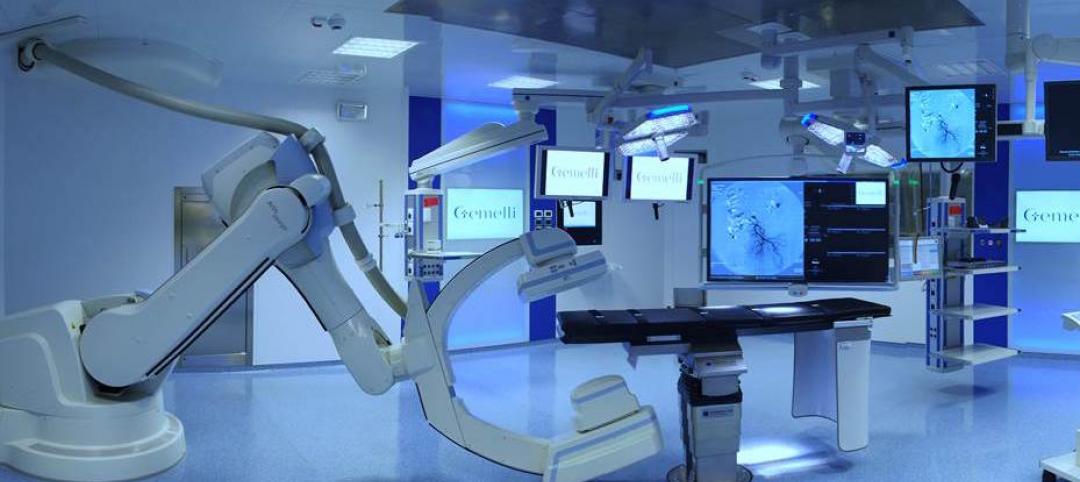The occasional pleasant surprise is always nice, but an unanticipated tornado is rarely greeted with enthusiasm. Most of us prefer a relatively predictable future with adequate warning when the occasional storm heads our way.
Unfortunately, our current political drama has made our healthcare clients view the future of their business environment in much the same way most of us approach the latest weather report. We want to stay abreast of the latest news, but what we hear is greeted with skepticism.
Just as very few of us would bet a significant amount of our wealth on the reliability of weather predictions, our healthcare clients are struggling with how best to approach long-term planning when our national healthcare policy seems to change with the nightly news cycle.
Within this rancorous political environment and the uncertainty that it imposes on the healthcare industry, architects are asking themselves how they can best serve their healthcare clients with decisions that have significant cost and long-term implications.
Our advice to fellow architects and clients alike is to focus on what you know and avoid speculative investments.
We know, for example, that most of the nation’s healthcare infrastructure is aging, with many hospital campuses occupied by buildings that are ill-suited to meet the demands of modern healthcare.
We know that we have an aging Baby Boomer population that will require care and treatment for chronic problems that accompany old age. We also know that they are living longer than their parents did.
We’re aware, too, that the demographic and financial composition of the country is evolving. We know that many of the rural areas of the country are poorly served and lack adequate healthcare services. We also know that many urban areas have inadequate or poorly distributed trauma services.
These realities provide direction for where healthcare providers might make meaningful and defensible investments—at least until the political seas calm and the way forward is a bit more predictable.
For healthcare architects, these realities also offer potential opportunities for marketing strategies that can be tailored toward the types of projects that might surface during this stressful period. Projects could include the modernization of existing facilities, conversions from semi-private rooms to private rooms, or energy system upgrades that reduce operating costs.
More proactively, healthcare planners and designers might consider bundling services that are directed toward strategically assisting their clients with assessing opportunities within their existing healthcare campuses—opportunities that could improve operational efficiency, space utilization, and throughput.
Architects may be as ill-equipped to resolve the healthcare policy turmoil as everyone else, but healthcare designers are very well positioned to assist their clients strategically with insight and creativity—not only to navigate the stormy waters that are currently roiling the industry, but also to make meaningful interventions that provide long-term value to the communities they and their healthcare clients serve.
Related Stories
Healthcare Facilities | Jun 19, 2016
Rapid growth of retail health clinics presents new choices for consumers, payers, and providers
Service expansions help dealers boost clinics’ profitability.
Healthcare Facilities | Jun 10, 2016
Top 10 health technology hazards include some influenced by space design
ECRI Institute’s annual list includes operational and workflow issues.
Healthcare Facilities | May 30, 2016
CBRE finds that investors are still flocking to healthcare sector
Over the past year, healthcare accounted for nearly one-fifth of all new jobs in the U.S.
Big Data | May 27, 2016
Analytics alone won't save money for healthcare facility owners
Advanced technology provides insight into the actions necessary to cut costs, but it's the people, processes, and implementation that make a difference with analytics, writes CBRE's Paul Oswald.
Hospital Design Trends | May 19, 2016
CannonDesign releases new white paper on advancements in operating room environments
"Surgical Suites: Emerging Approaches to Planning and Design" offers solutions for collaboration and technology integration.
Healthcare Facilities | May 6, 2016
Infographic: The greening of healthcare
By adopting green building and sustainable practices, healthcare facilities can save $15 billion over 10 years. Skanska's infographic spells it all out.
Healthcare Facilities | Apr 29, 2016
How improving emergency department design leads to greater hospital efficiency
Efficient ED operations result in shorter wait times, quicker diagnosis and care plans, maximum utilization of high-cost human and physical resources, and overall better patient experiences and patient satisfaction scores, writes CBRE Healthcare's Curtis Skolnick.
Healthcare Facilities | Apr 24, 2016
A symposium in New Jersey examines how a consolidating healthcare industry can better manage its excess real estate
As service providers position themselves closer to their communities, they are looking for ways to redirect non-core buildings and land for other purposes.
Senior Living Design | Apr 14, 2016
Creating a home for eldercare using the ‘Green House’ design concept
VOA Associates’ Douglas King offers design considerations in implementing the Green House concept in eldercare for continuing care retirement communities.
Adaptive Reuse | Apr 7, 2016
Redevelopment plan announced for Chicago’s historic Cook County Hospital
The century-old, Beaux Arts architecture-inspired hospital will transform into a mixed-use development.















